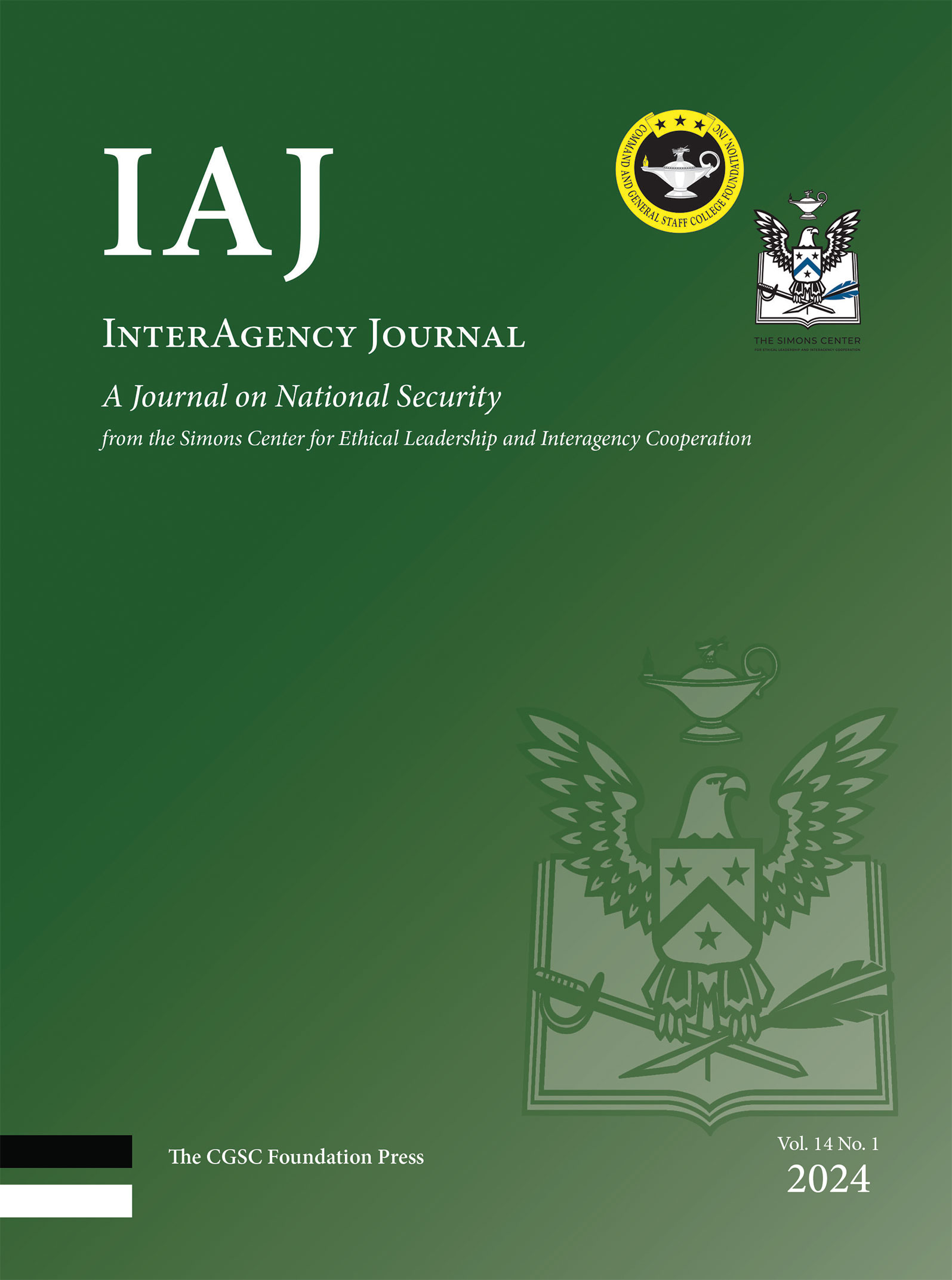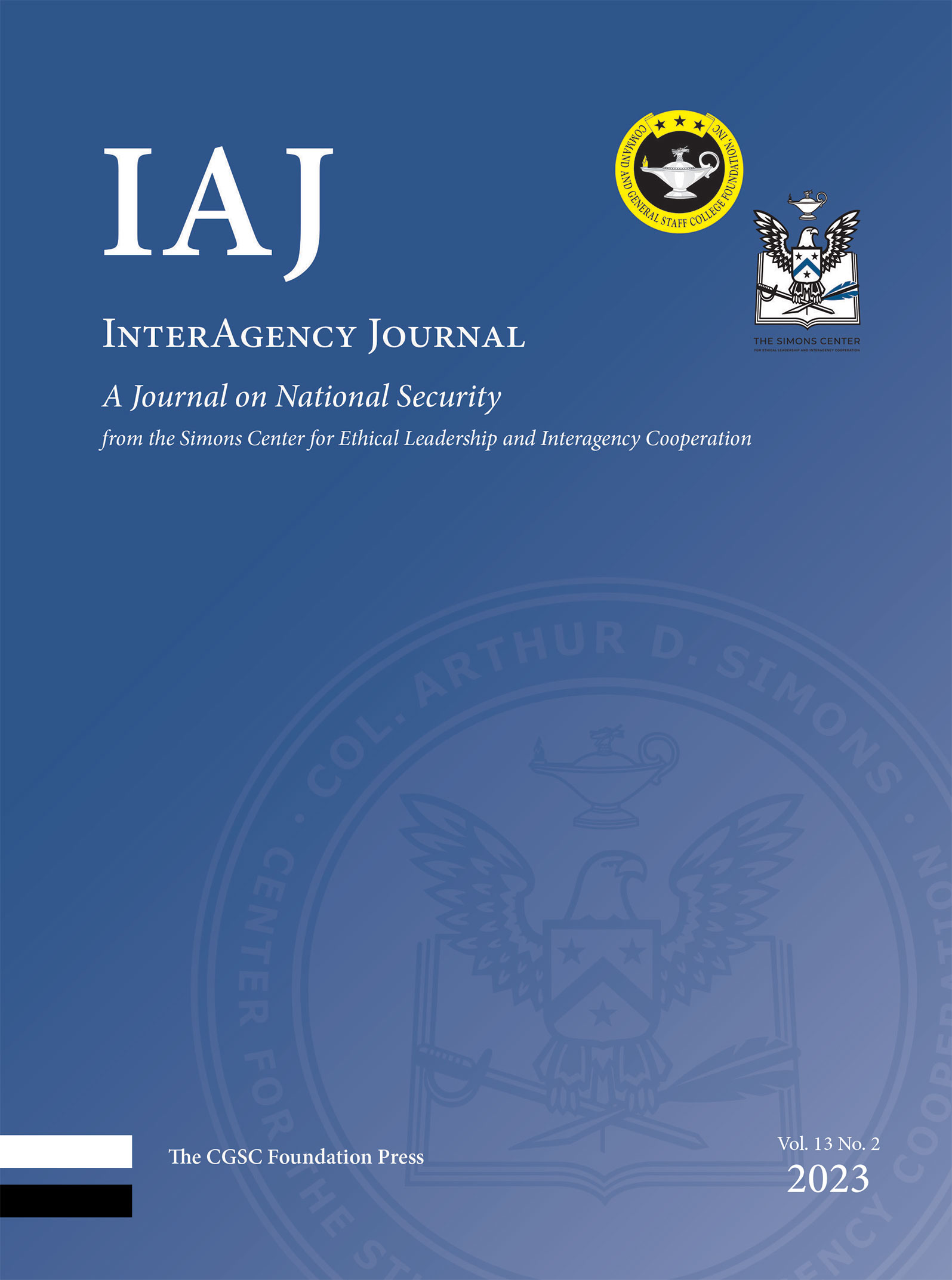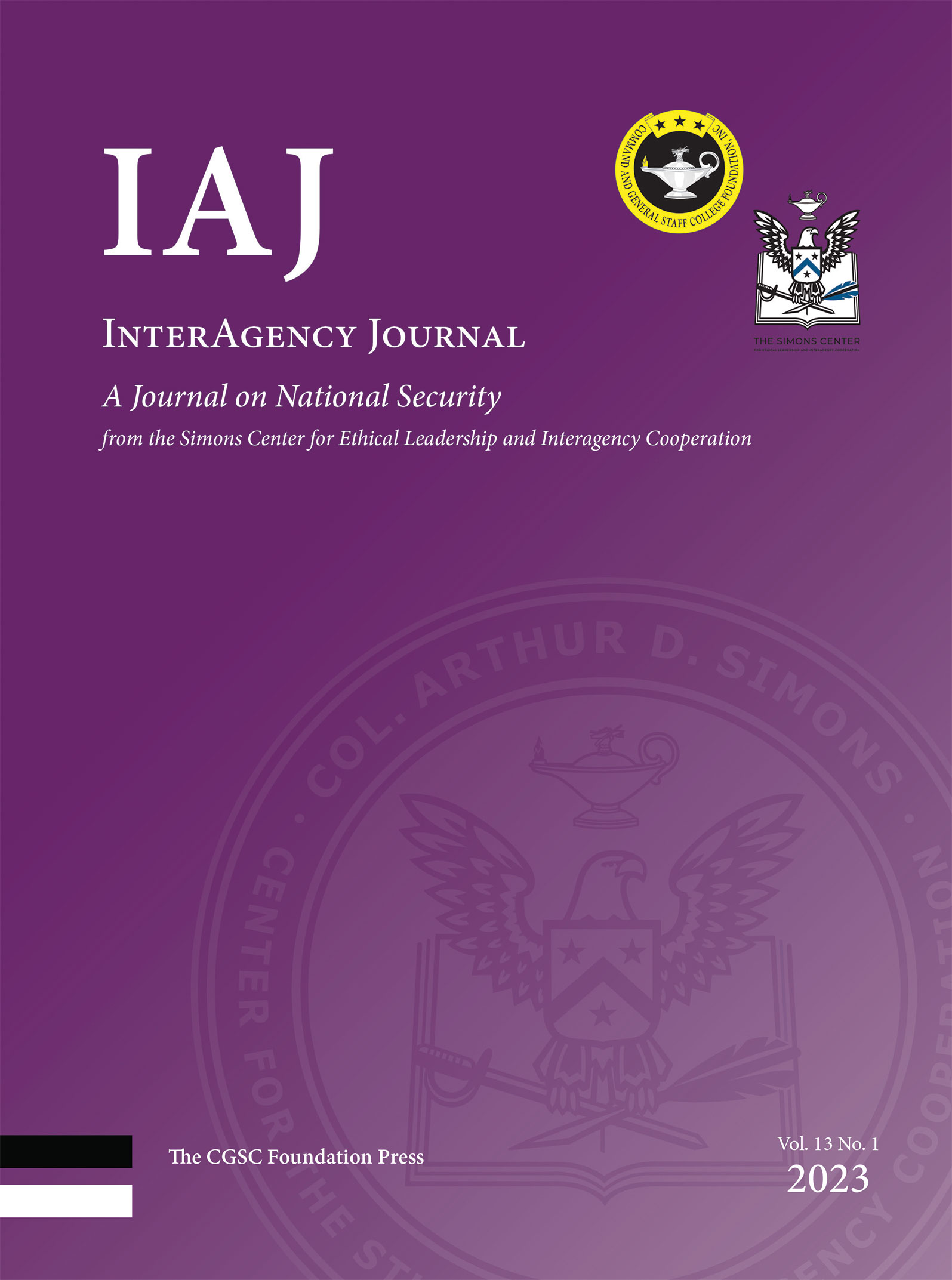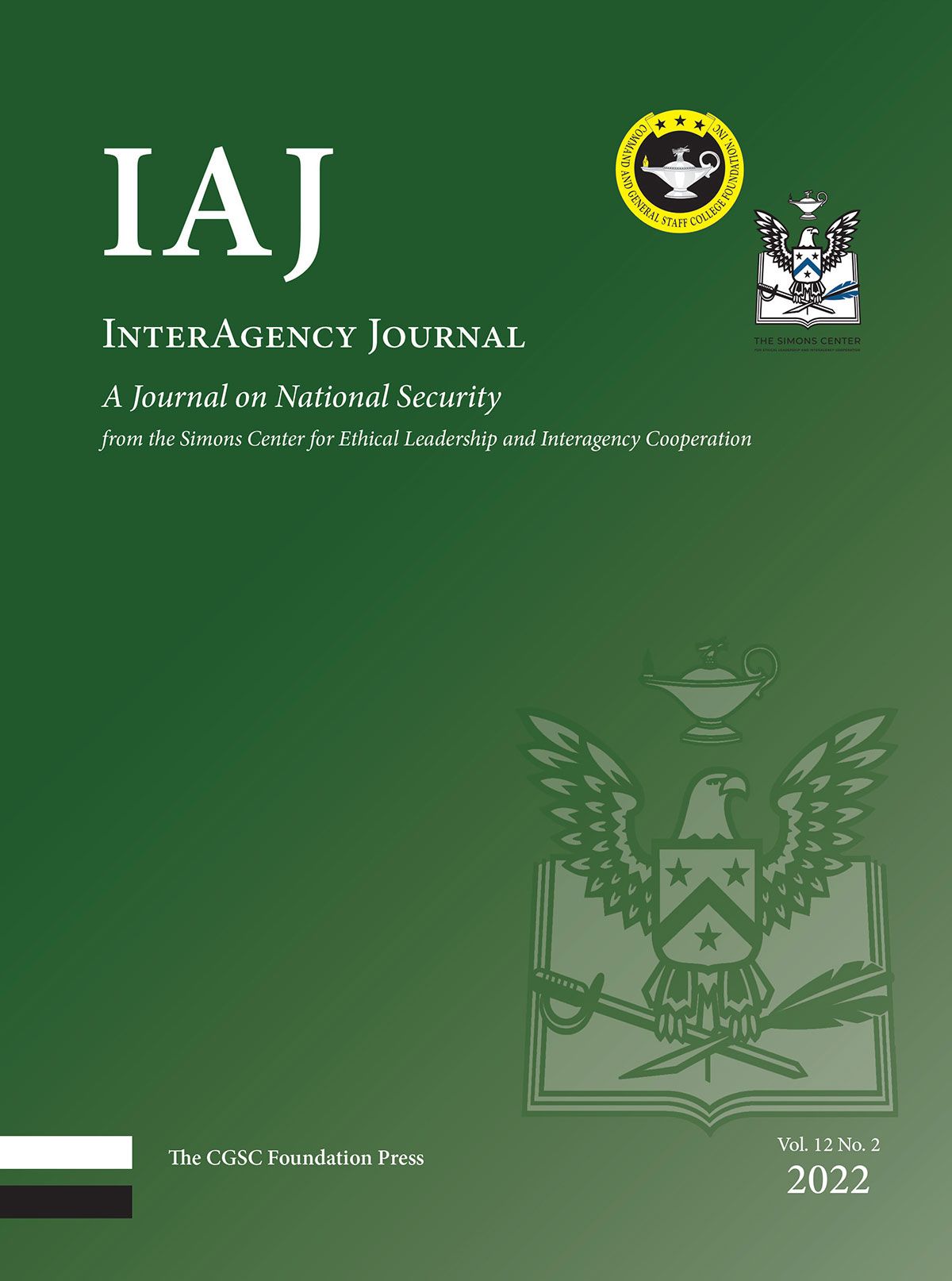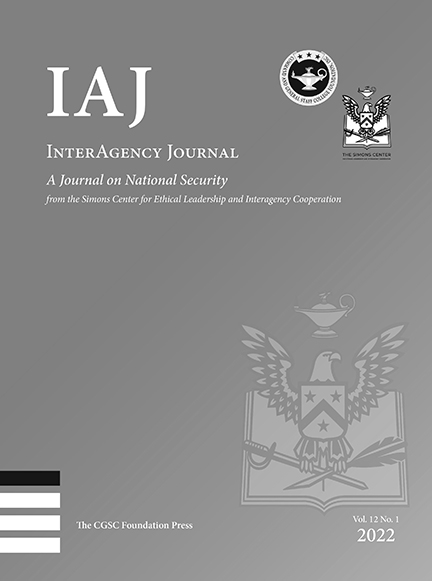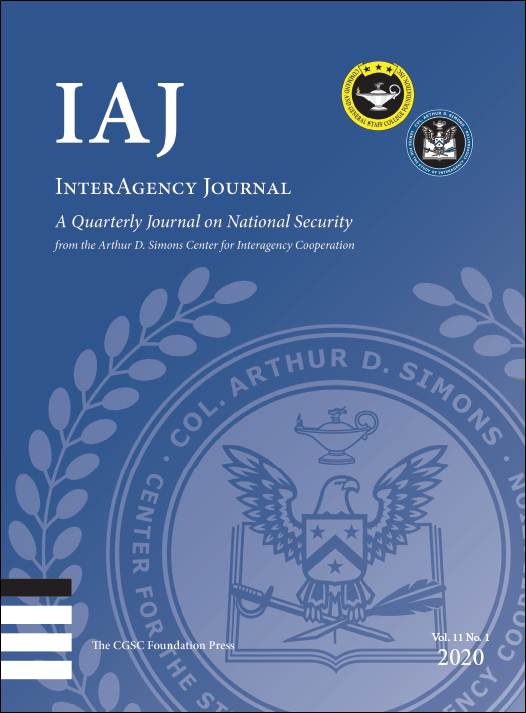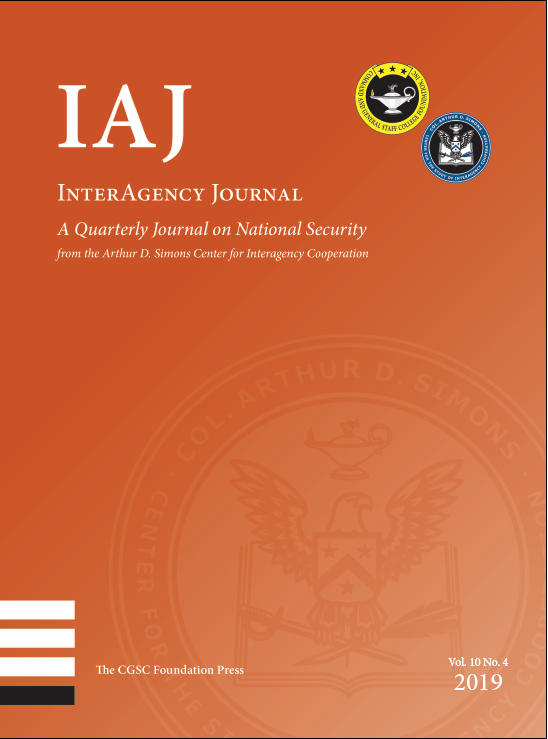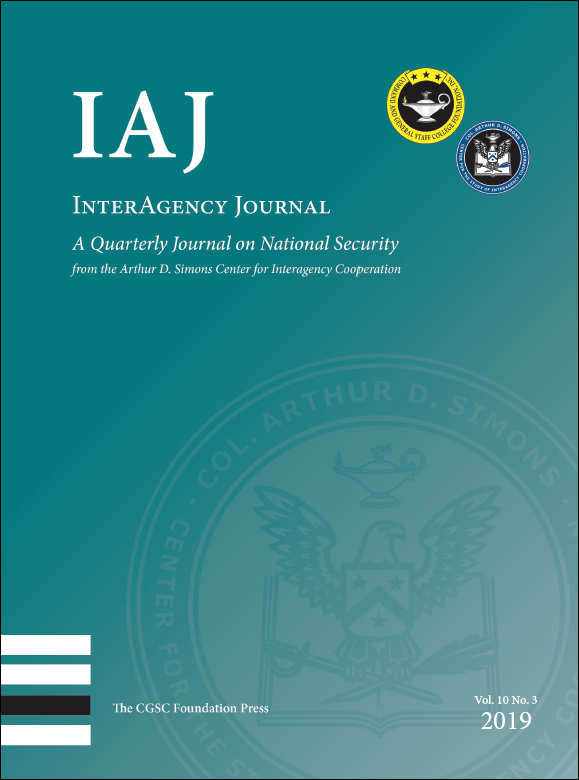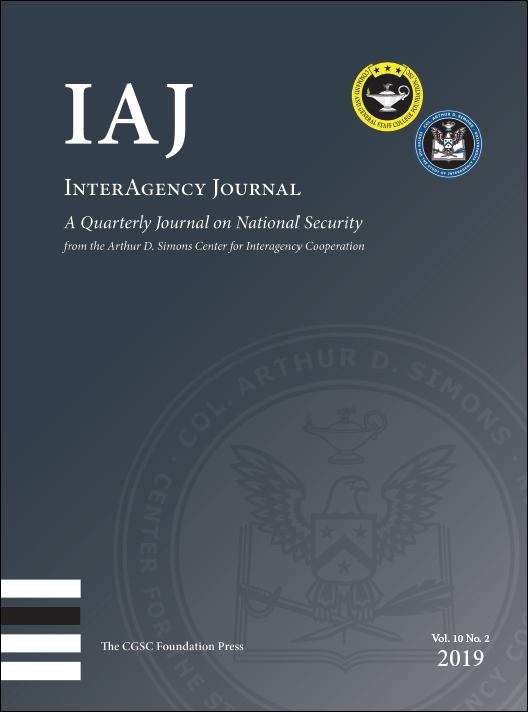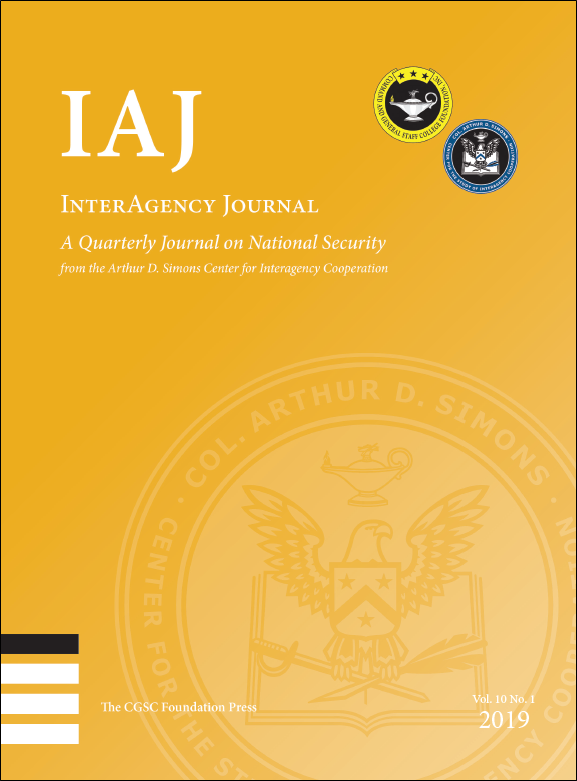Publications Category: Interagency Journal
– The Future is Electric (Part 1)
– Back to the Future: FEMA’s role in the era of Strategic Competition
– Assessing Leadership Among WHO’s Directors-General
– Impact of Ungoverned Spaces on Nigeria’s Counterinsurgency Efforts
– Half-Pivot: Why the Obama Pentagon Could Not Shift to the Pacific
– Harbors and Hidden Agendas
– A Whole-of-Government Approach to Leveraging Our Most Strategic Asset – Allies and Partners
– Retired Flag Officers and Public Political Criticism
– Challenges Of Border Security in Nigeria: A Case Study of Nigeria’s Joint Border Patrol Team
– A System Under Strain: Coherence and Incoherence in the American Way of Limited War
– Is Iraq Worth the Investment?
– Why Russia Failed So Far: The Impact of Civil-Military Relations
– Moral Friction: Harm and Incongruence in Hierarchical Structures
– The Just War Tradition in a Modern LSCO Environment: A Maneuverist Perspective of the Russia
-Ukraine War
- A Whole of Nation Approach During Large Scale Combat Operations: The Department of Labor and the American Workforce
– Creating a Learning Environment for the Development of Interagency Leaders
– Strength in Communication: A Study of Defense Intelligence Agency’s Application
– Beyond Black Hawk Down: Revisiting U.S. Intervention in Somalia Over a Quarter Century Later
– Interagency Approach to Achieve Integrated Deterrence
– The Many Dangers of Moral Antirealism
– Adversaries in the Altiplano: Strategic Competition in South America’s Lithium Triangle
– Artificial Intelligence: Winning the Talent Management Race
– Once an Advisor: How Security Force Assistance is Essential for the American Way of War and Deterrence in Strategic Competition
– Human Rights as an Army Special Operations Forces Tool to Compete with China in the Indo-Pacific
– Mutually Assured Survival: Deterring Inadvertent Conflict Escalation Through Strategic Restraint Signaling
– The Complexities of American Foreign Policy: The Case for Diplomatic Experience and Education
– Undercover Operations in the U.S. to Counter Terrorism and National Security Threats
– Fixing a Hole: Contemporary Security Issues in Africa
– Understanding the Budgets of the Sino-U.S. Naval Arms Race
– Operation Citadel: Enabling the Interagency Approach
– The Fallacy of a Marketing Approach Applied to Interagency Influence Efforts
– The Productive Organization: Survival of the Fittest
– Mission Command: Small Teams in the U.S. Border Patrol
– A Solution to WMD Proliferation
– A Nation Unprepared: Bioterrorism and Pandemic Response
– Missed Operational Opportunities in the
– Global War on Terror’s Prisons and Camps
– The First 21st Century Water War
– Empowering U.S. National Security with Artificial Intelligence Capabilities
– Proxy Warfare on the Roof of the World: Great Power Competition Lessons from Tibet
– Countering Russian Hybrid Warfare
– The Economics of Trade and National Security
– Enabling Tax Payments: A Novel Approach to Reducing Violence and Poverty in El Salvador
– Very Small Satellites: A Mechanism for the Early Detection of Mass Atrocities
– Understanding the Challenges and Stakeholders in Providing Humanitarian Aid to North Korea
– The Value of Conceptual Planning During Disasters
– The Literature of Intelligence
– Organizational Ethics Gone Wrong
– Bureaucracy in Service of a Madman
– The Challenges in Joint Interagency Task Force Operations in a Predatory State
– A Comparative Analysis of the Effectiveness of Operations in Mali and Somalia
– In the beginning… Special Report by Robert Ulin
– Military Neuro-Interventions: Solving the Right Problems for Ethical Outcomes
– The Decembrist Revolt and its Aftermath: Values in Conflict
– Coding Just War Theory: Artificial Intelligence in Warfare
– When Asimov’s Robots Encounter the Laws of War
– Defense Against Weaponized Information: A Human Problem, Not Just A Technical One
– Bridging the Accountability Gap: The Special Court for Sierra Leone
– Engineering Telos: Flourishing in the Context of AI and Transhumanism
– The Role of Cognitive Dissonance in Dehumanization: Denying Humanity through AI
– Artificial Intelligence-Enabled Autonomous Weapon Systems and the Laws of Armed Conflict
– The Influence of Transhumanist Thought on Human Enhancement
– Situating Weapons of Mass Destruction in our Interagency Thinking
– Enhanced Research into Synthetic Biology
– The Interagency Challenges of Hypersonic Strike Weapons
– Entomological “Weapons” of Mass Destruction
– Advancing Bio Detection with Biosensors and Nanotechnology for Rapid Interagency Response
– The Interagency’s “WMD” Terminology Problem
– Defining “Surety” within the Interagency
– Radiological Nuclear Detection Task Force: A Real World Solution for a Real-World Problem
– Future Conflict, Open Borders, and the Need for Reform
– Cyber Attacks: The New WMD Challenge to the Interagency
– Japan’s Security Strategy and Its Impact on U.S. National Security Interests
– Employing Maritime Security Response Teams as the Nation’s Maritime Crisis Response Force
– Lessons for Cyber Policymakers
– Lifting the Interagency Fog of Information: Blockchain Information-Sharing and Radical Inclusion
– Interagency Approaches to Prevent the Reoccurrence of Conflict in Sierra Leone
– Assessing the Impact of American and Chinese Economic Competition in Sub-Saharan Africa
– Lessons on Collaboration from Recent Conflicts: The Whole-of-Nation and Whole-of-Government Approaches in Action
"*" indicates required fields
